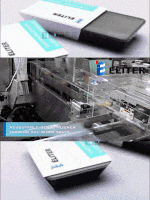Packaging Sustainability: 8 Trends of Alternative Materials
2023-01-28
The desire to use environmentally friendly materials brings new challenges to scale these packaging alternatives to an industrial level. Options such as starch, algae and mushrooms are the most promising.
Three decades ago it was unlikely to imagine that materials such as algae or crustacean shells would be useful to generate more sustainable alternatives for the packaging industry; however, nowadays, these materials are attractive options when looking for an alternative to fossil-based plastics.
This search for new packaging alternatives is the result of a paradigm shift that has been taking place in the thinking, not only of manufacturers but of the consumer, who today is focused on taking care of the environment and reducing the waste generated by the packaging of different industries.
From the magazine El Embaque + Conversión, we collect some of these materials that are booming globally, their properties, their characteristics, and the challenges they face when replacing traditional petroleum-based plastics.
Mushroom-based packaging
Since the Swedish furniture manufacturer Ikea announced its intentions to replace its styrofoam containers with the packaging of natural origin based on mushrooms, there has been an increase in the popularity of this material. Manufactured by the company Ecovative Design, this material is obtained from the fusion of agricultural waste (such as corn husks or hemp) with cells extracted from the roots of fungi called mycelium. These cells secrete an enzyme capable of decomposing agricultural waste, generating a residue that, when subjected to high temperatures, produces a new material that has been called Ecocradle.
Algae and its impact on the industry
There are many companies that have found different uses in the properties of this plant. For example, the DS Smith company announced its plans to incorporate algae fibers into its production line in order to replace commonly used wood fibers.
Likewise, the company Evoware unveiled an edible seaweed-based packaging available for a wide range of applications, including food wrappers and coffee bags. The material is biodegradable, compostable and dissolves in water. Evoware stated that this edible material is also printable and heat sealable and can be customized with specific brand elements.
Starch-based packaging
Starch has been presented as one of the most important natural polymer alternatives in the packaging industry. Polylactic acid (PLA) is one of the most widely used bioplastics derived from vegetable starch to replace petroleum-derived polymers. PLA, which is usually extracted from corn starch, sugar cane, or beets. It is an attractive solution, as it allows to be molded into different shapes, blown into films or used as a barrier coating. PLA can also be mixed with corn starch to create films and bags with the same properties. Additionally, the PLA can be composted.
Packaging from bagasse
Among the most common alternative materials are those created from bagasse, that dry and fibrous material that remains as a residue after the extraction of sugar cane juice. Bagasse fibers are mixed with milk and hot water and formed in the same way as the traditional pulp that forms egg cartons.
Bagasse is recyclable and compostable and is a good choice to replace tree-derived papers, as it requires less chemical processing than pulp from trees.
Containers created with air
The alliance between Newlight Technologies, LLC and Dell, has developed a film called AirCarbon in order to protect the finish of their laptops during the transportation process. Newlight has managed to capture air and carbon from greenhouse gas sources and use it to create a material with characteristics comparable to those of traditional polyethylene.
The research focuses on microorganisms found in the ocean that feed on methane and carbon dioxide, and that are able to convert these gases into a natural polymer that can be molded in the same way as plastic.
Chitosan
Chitosan has proved useful to start eliminating the use of petroleum-based films. Chitosan is obtained by mixing the chitin shells of shrimp, prawns and other crustaceans with an alkaline substance. Subsequently, the chitosan is treated with wood cellulose pulp or cotton, generating a compostable barrier coating of multiple applications. A specific case is the chitosan-based coating for carrots that is being developed by the University of the Basque Country.
Water-soluble materials
Among the most innovative solutions are those that include water-soluble materials. The company Smartsolve has launched a portfolio of different materials on the market such as paper, cardboard, thread, tapes and other adhesives, all soluble in water. The basis of the success, according to the company, is in the plant origin of its materials that do not leave residues in the seas and oceans.
An example of this type of innovation had already been seen in Latin America, when the Chilean startup Solubag introduced its completely water-soluble bag to the market. The bag does not contain any plastic. As a raw material, the startup uses a patented formula based on polyvinyl alcohol and limestone rock.
Recycled cotton
Textile waste has also been a challenge: it is estimated that in the United States it accounts for 8% of all waste that ends up in the landfill. To give it a second life, some companies are recycling the fabric to use it as an insulation barrier and thus replace Expanded Polystyrene Foam (EPS). However, one of the problems with this method is that this type of insulating cotton needs a plastic cover, which must be separated and recycled separately, presenting a challenge at the end of its life cycle.




